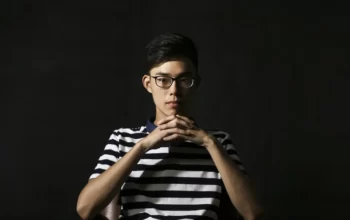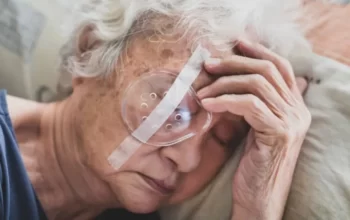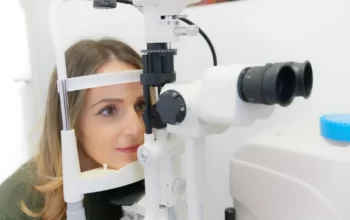
If not discovered during an eye exam, amblyopia, or lazy eye, can go undetected for years. When will it be too late to treat this condition?
Learn more about amblyopia in the following paragraphs, including what it is, how it arises, and when it might be too late to treat it.
Can It Be Too Late To Get Help For Amblyopia?
Anyone at any age can benefit from treatment, though it is ideal and more effective if it is started before the age of 5. As the connections between the eyes and the brain are still forming, it is best to address amblyopia before the age of five.
Treatment for amblyopia is best started before the age of seven. The connections between the brain and eyes are still developing at this age, which is advantageous. However, receiving treatment for amblyopia is never too late.
Although treatment is possible at any age, it may become more challenging after childhood. 50% of kids between the ages of 7 and 17 respond to treatment. How can your eye doctor handle amblyopia?
What Causes Lazy Eye
The condition known as “lazy eye” is more of a neuro-developmental vision disorder than an actual eye issue. Both eyes send nerve signals to the brain, and when these nerve signals or pathways aren’t working, it affects how one eye develops.
The brain only uses the stronger eye when one eye is weak, ignoring any signals from the weaker eye. Lazy eyes result from poor brain-eye connections. Due to out-of-focus images from the weaker eye, vision is impaired and depth perception is lost.
Other causes of lazy eye can include different vision problems, such as:
- Refractive errors: An astigmatism, nearsightedness, or farsightedness in one eye are all possible.
- The brain ignores the images from the misaligned eye when one eye turns in, out, up, or down (strobosis).
- Cataract: The vision in one eye may be affected when the lens becomes cloudy.
- Family history of lazy eye
- Trauma causing damage to one eye
- Drooping of one eyelid
Amblyopia Treatments
There are 2 different methods for treating amblyopia. Your optometrist has two treatment options: either they focus on the affected eye and enhance its vision, or they try to treat the underlying eye condition. Treatment for amblyopia is most effective for younger children, though it can help people of any age.
Glasses
Glasses can assist in treating the underlying eye condition that causes amblyopia. This treatment can help correct refractive errors such as:
- Myopia
- Hyperopia
- Astigmatism
To track how well they are treating vision issues in the lazy eye, your optometrist must always see someone wearing glasses. An eye-turning issue can be solved with glasses.
Glasses aren’t always the only amblyopia treatment required, though sometimes they are.
Eye Patches
Making the weaker eye work can help treat amblyopia. Eye protection like eye patches can help with this. They conceal the dominant eye, forcing the brain to rely on the weaker eye for information.
The eye patch is usually worn by someone for a few hours every day, but there are different treatments available.
Atropine Eye Drops
Your vision will become blurry when looking at up-close objects thanks to atropine’s assistance in dilating your pupils. To cause vision blur in the healthy eye, your optometrist may prescribe atropine eye drops. Similar to how an eye patch works, blurry vision in one eye makes the lazy eye work harder.
Surgery
The eyes can be realigned with the aid of eye surgery. Surgery, however, may or may not make vision better. Whether this is a wise choice depends on your optometrist.
Vision Therapy
Physical therapy for your eyes is known as vision therapy. Your optometrist teaches your visual system using a variety of exercises. These exercises may include:
- Therapeutic lenses
- Prisms
- Filters
- Balance boards
- Electronic targets
The specific needs and goals of the individual are met by vision therapy. Individual treatment regimens may vary.
The selected exercises’ main objectives are to help the visual system become stronger and to enhance eye muscle control. Your brain won’t be able to suppress information from the weaker eye thanks to the exercise program, which promotes simultaneous use of both eyes.
Although amblyopia treatment is most effective for younger children, your optometrist can assist with this condition regardless of your age. Your needs can be met by any amblyopia treatment, including eye patches, glasses, and vision therapy.

Can You Ever Be Treated For Lazy Eyes?
Treatment for lazy eye was initially believed to be ineffective after the age of 9 or 10. 53% of kids between the ages of 7 and 12 responded to treatment, according to studies. Studies also reveal that 47% of adolescents aged 13 to 17 who have never received treatment for lazy eye experience the same outcomes as youngsters aged 7 to 12.
The earliest possible treatment for lazy eyes is recommended. However, treatment can help children and teenagers up to the age of 17 see better. Additionally, they discovered that older children exhibit lazy eyes less frequently than younger kids.
Vision Therapy For Lazy Eye
Lazy eye can be treated if caught early enough to avoid long-term vision issues. Even though older children respond well to treatment, late diagnosis to establish brain-eye coordination may be slow.
No matter your child’s age, talk to your eye doctor about the potential for treating lazy eyes if you are concerned about their vision. Customized vision therapy programs are available from Avenue Optometry & Vision Therapy.
There’s Always Time To Improve Your Vision
Since children’s eyes are still developing, amblyopia treatment is ideal for them. Any age can benefit from treatment, though you don’t have to be a child to do so. To help you see better in your weaker eye, your ophthalmologist can design a personalized treatment plan.
A personalized treatment plan is what your eye doctor suggests, and he or she is here to help you see better. If you or a member of your family suffers from amblyopia, get in touch with Discover Eyecare.
Treatment Options For Adult Amblyopia
Adults with amblyopia can now be treated by retraining their brain to get rid of the symptoms. Programs that provide dichoptic vision training have improved the vision of elderly people with lazy eyes who were 55 to 60 years old. Contrary to popular belief, lazy eyes can be treated at any age. Adults can successfully deal with their lazy eyes without surgery thanks to modern technological advancements that help achieve perfect vision.
Conclusion
In conclusion, treat amblyopia as soon as it is diagnosed and don’t stop treatment even if you’ve passed the window that most guidelines specify as the best. When is it too late then? It is never too late, regardless of age, as long as there is improvement with treatment. In fact, patients in their 60s and 70s who devote their time to vision therapy and pursuits that engage their lazy eye are reporting an increasing number of successes! In other words, never give up trying!



